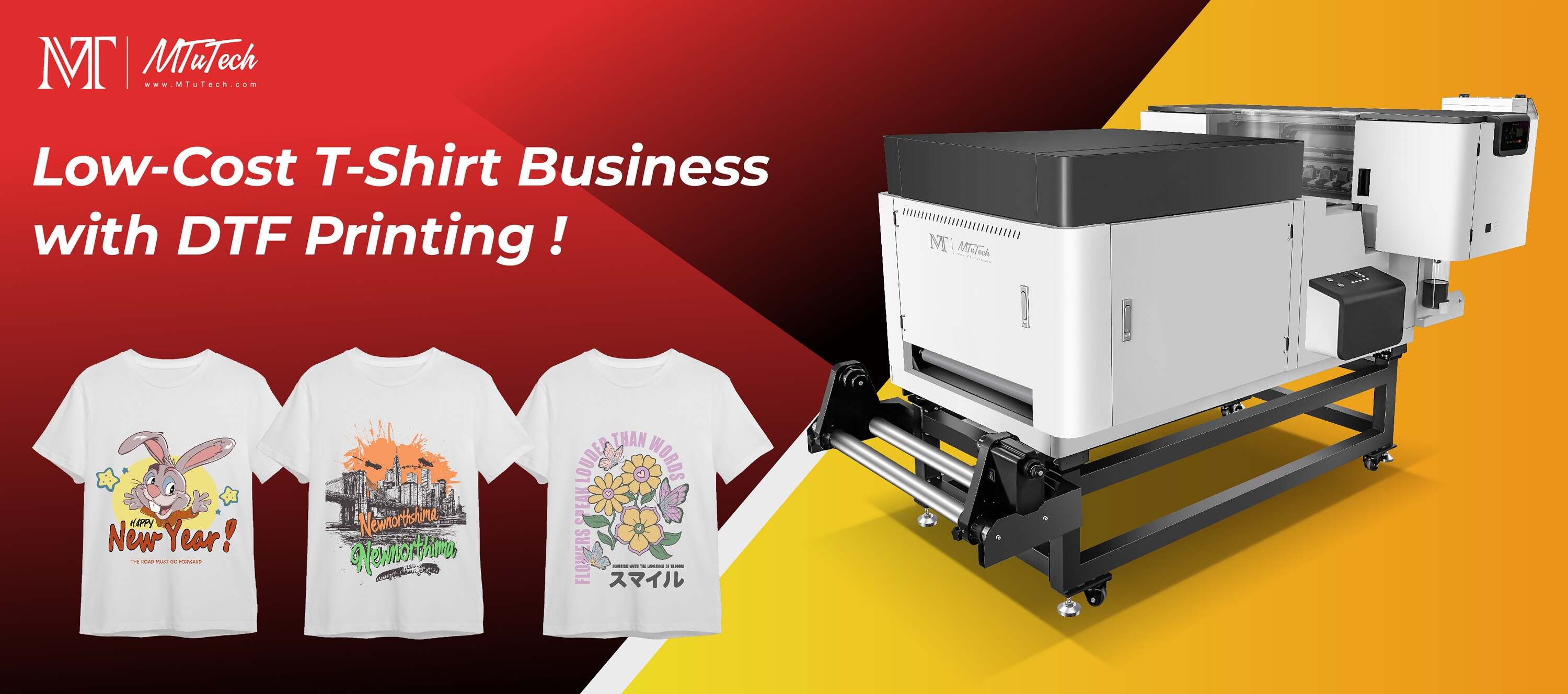Introduction
Direct-To-Film (DTF) printing has revolutionized the custom apparel and textiles industry. Among the various DTF printers on the market, the 22 inch DTF printer stands out due to its versatility and capability to produce high-quality prints on a wide array of materials. This blog post will delve into the features, benefits, and practical applications of the 22 inch DTF printer, ensuring you have all the information you need to make an informed decision for your printing needs.
What is a 22 Inch DTF Printer?
A 22 inch DTF printer is designed specifically for direct-to-film printing, which allows users to transfer images and designs onto fabrics using a special film. The 22-inch width offers ample space for larger designs, making it ideal for a variety of applications, including custom t-shirts, hoodies, bags, and more. Unlike traditional printing methods, DTF printing is both efficient and cost-effective, allowing for vibrant colors and intricate details.
Benefits of Using a 22 Inch DTF Printer
The 22 inch DTF printer provides numerous advantages that make it a preferred choice among professionals in the printing industry. Here are some of the standout benefits:
Wide Format Printing: With a print width of 22 inches, you can handle larger designs without the need for multiple setups or tiling.
High-Quality Prints: The printer produces vivid colors and sharp details, ensuring that each design stands out.
Versatility: DTF printers can print on various materials, including cotton, polyester, leather, and more, catering to different project needs.
Durability: DTF transfers are known for their longevity, resisting fading, cracking, and peeling over time.
Cost Efficiency: DTF printing reduces material waste and minimizes ink consumption, making it a budget-friendly option for both small businesses and large enterprises.
Fast Turnaround: With streamlined processes, you can complete jobs more quickly compared to traditional printing methods.
Key Features of the 22 Inch DTF Printer
When selecting a 22 inch DTF printer, considering its features is crucial to ensure it meets your specific requirements. Below are some key features that typically come with these printers:
High-Resolution Printing
The capability of producing high-resolution images (typically 1200 DPI and higher) ensures that even the finest details in your artwork are accurately recreated.
User-Friendly Interface
Modern DTF printers often come with intuitive software and interfaces, making it easier for users to manage jobs and settings without needing extensive technical knowledge.
Fast Drying Technology
Many advanced DTF printers are equipped with quick-drying capabilities, which help in speeding up the production process by reducing the waiting time for prints to dry.
Support for Various Inks
These printers are designed to work with a range of ink types, including eco-solvent, water-based, and pigment inks, allowing for flexibility based on the material and project requirements.
Built-In Color Management
A robust color management system ensures that your prints are consistent in color, vital for maintaining brand integrity and quality.
Applications of 22 Inch DTF Printers
Due to their versatility, 22 inch DTF printers find their applications in various domains, including:
Custom Apparel: Perfect for creating personalized clothing designs, from t-shirts to jackets.
Promotional Products: Ideal for printing on bags, caps, and other promotional items that require branding.
Home Decor: Capable of printing designs on fabrics for cushions, curtains, and wall hangings.
Industry-Specific Items: Excellent for creating uniforms and industry-specific gear that require durability and comfort.
How to Maintain Your 22 Inch DTF Printer
To ensure that your 22 inch DTF printer remains in optimal condition, regular maintenance is essential. Here are some maintenance tips:
Routine Cleaning: Regularly clean the print head and other components to prevent clogs and maintain print quality.
Use Quality Inks: Invest in high-quality inks that are compatible with your printer to enhance print longevity and performance.
Monitor Settings: Regularly check and calibrate the printer settings to ensure optimal output.
Follow the Manufacturer's Guidelines: Always adhere to the recommended maintenance schedule provided by the printer's manufacturer.
Conclusion
In conclusion, the 22 inch DTF printer is an outstanding investment for those in the custom printing industry. With its ability to deliver high-quality, durable prints on a variety of materials, it offers exceptional versatility and efficiency. Whether you’re running a small business or managing a large production facility, understanding the capabilities and features of a 22 inch DTF printer can significantly enhance your productivity and profitability. If you're considering integrating this technology into your operations, explore our high-quality DTF printers here and see how they can transform your printing processes.
FAQ
What is the difference between DTF printing and DTG printing?
DTF (Direct-to-Film) printing involves printing designs onto a film that is then transferred onto the fabric, allowing for greater versatility with different materials. In contrast, DTG (Direct-to-Garment) printing directly applies ink onto the fabric itself, which is usually limited to cotton or cotton-blend materials.
Can I use a 22 inch DTF printer for small designs?
Yes, a 22 inch DTF printer is versatile enough to handle both small and large designs. You can easily adjust the settings to print smaller graphics without any issues.
What types of materials can I print on with a DTF printer?
DTF printers can print on a wide variety of materials, including cotton, polyester, blended fabrics, and specialty materials like leather and nylon, making them extremely versatile for different projects.
Is the ink used in DTF printers environmentally friendly?
Many DTF printers use water-based inks, which are typically more environmentally friendly than solvent-based inks. However, it's essential to check the specific ink brand for its environmental impact and compliance with regulations.
How can I ensure the best print quality with my DTF printer?
To achieve the best print quality, use high-resolution images, regularly maintain the printer by cleaning and calibrating it, and utilize quality inks and films. Additionally, ensure that the settings are appropriately adjusted based on the material you are printing on.

